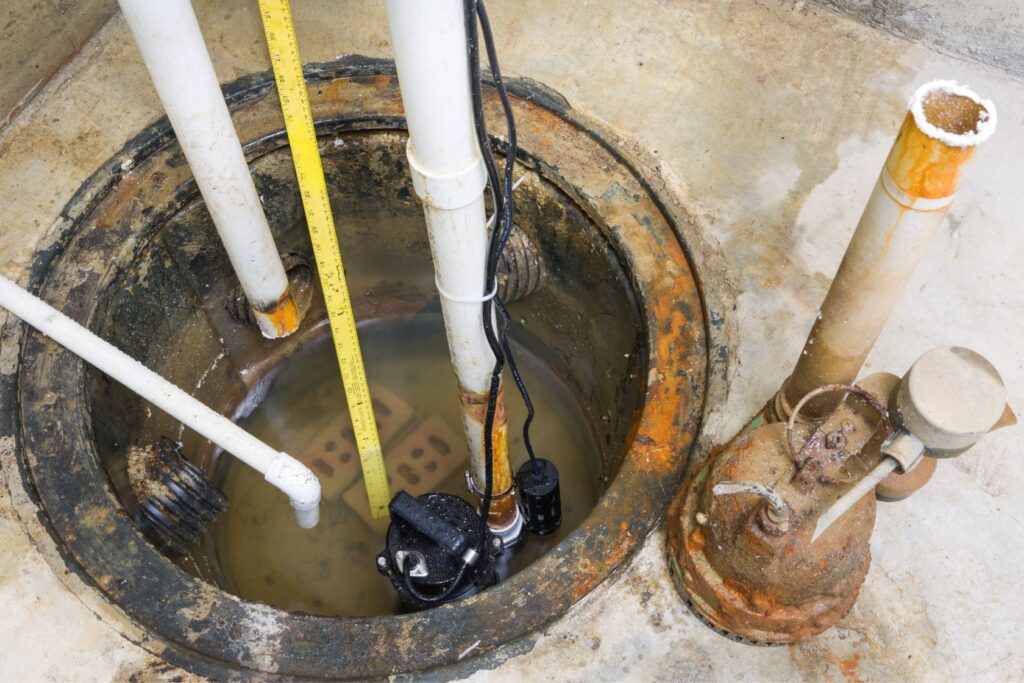Owning a property, be it residential, commercial, or industrial, often comes with the responsibility of maintaining and protecting your basement from water damage and flooding. A basement can be a crucial space for storing valuable belongings, housing important machinery, or serving as functional living areas. Regardless of the purpose, it is vital to ensure that your basement remains dry and safe from potential damage caused by water intrusion.
A sump pump is a critical tool in preventing basement flooding and water damage. Acting as a safeguard against water buildup, a sump pump resides in a pit, usually located at the lowest point of a basement, and automatically activates when the water level within the pit reaches a certain threshold. The pump then effectively removes the water and directs it away from your property’s foundation, ensuring your basement remains dry and protected from possible flooding.
Explore the benefits of installing a sump pump, the different types of sump pumps available, considerations for proper installation, and common maintenance practices. Our trained professionals can assist you in choosing the right sump pump for your property, ensuring that your basement remains dry and protected from water damage.
The Benefits of Installing a Sump Pump in Your Basement
A sump pump is a critical tool in safeguarding basements against water damage, particularly in residential, commercial, and industrial properties. There are countless benefits to installing a sump pump within your property, such as:
1. Reduction of Flooding Risks: Heavy rains, broken pipes, or sewer backup can all result in basement flooding. A properly functioning sump pump efficiently removes excess water, minimizing the risk of flooding.
2. Prevention of Mold and Mildew: A dry basement is less prone to developing mold and mildew, which can pose health hazards and damage your belongings.
3. Protection of Your Investment: Installing a sump pump helps preserve the structural integrity of your property, preventing potential water-related damage that could lead to costly repairs.
Types of Sump Pumps
There are two primary types of sump pumps: pedestal and submersible. While both types effectively remove excess water and protect against basement flooding, they differ in design, functionalities, and installation requirements.
1. Pedestal Sump Pumps
A pedestal sump pump features a motor mounted on a pedestal above the sump basin. The pump is connected to a pipe that extends into the pit and removes water when the float switch detects a rise in the water level. Pedestal sump pumps are typically less expensive than submersible pumps and offer easier access for maintenance due to their above-ground motor placement.
2. Submersible Sump Pumps
Submersible sump pumps have a motor enclosed within a waterproof casing, allowing it to be submerged in the sump basin. These pumps are generally more powerful and quieter than pedestal pumps, making them ideal for larger basements or areas prone to significant water infiltration. The sealed design also protects the motor from water and debris, providing a longer lifespan.
Choosing the Right Pump for Your Property
When deciding on a sump pump for your property, there are several factors to consider, including:
1. Pump Size and Power
The size and power of a sump pump are determined by its horsepower (HP) and the gallons per hour (GPH) it can pump. It is essential to choose a pump with the appropriate size and power capacity to handle your property’s water infiltration levels.
2. Type of Switch
Sump pumps rely on different types of switches, such as tethered, vertical, and electronic switches. Each switch offers distinct advantages and disadvantages. For example, tethered switches provide an increased pumping range but require more space in the sump pit, while electronic switches are compact but can be more sensitive to water level fluctuations.
3. Material Construction
Sump pumps can be constructed from materials such as cast iron, stainless steel, or plastic. The material will impact the pump’s durability, heat dispersion, and corrosion resistance. It’s crucial to choose a pump made of materials that will best suit your property’s specific needs and environment.
Installation and Maintenance Considerations
Proper installation and maintenance are crucial in ensuring the continued efficiency and lifespan of your sump pump system. Our skilled professionals can provide expert guidance in both areas.
1. Correct Installation
An improperly installed sump pump can overload, fail prematurely, or increase the risk of basement flooding. Our technicians consider factors such as sump pit depth, placement of the discharge pipe, and the correct type of switch to ensure that your sump pump operates at peak efficiency.
2. Regular Maintenance
Regular maintenance is essential in prolonging the life of your sump pump and preventing unexpected breakdowns. Our professionals can help you schedule routine maintenance tasks, such as checking the float switch, cleaning the sump pit, and inspecting the pump for wear and tear.
Conclusion
A sump pump is an essential investment for safeguarding your basement against water damage and flooding. By understanding the different types of sump pumps, their features, and the factors to consider when choosing a suitable system, you can protect your property and maintain its structural integrity.
Trust our skilled technicians at Emergency Plumbing Heating & Air for all your sump pump installation and maintenance needs. Contact us today to learn more about our comprehensive plumbing services in Delaware and experience the peace of mind that comes with a dry and protected basement!









